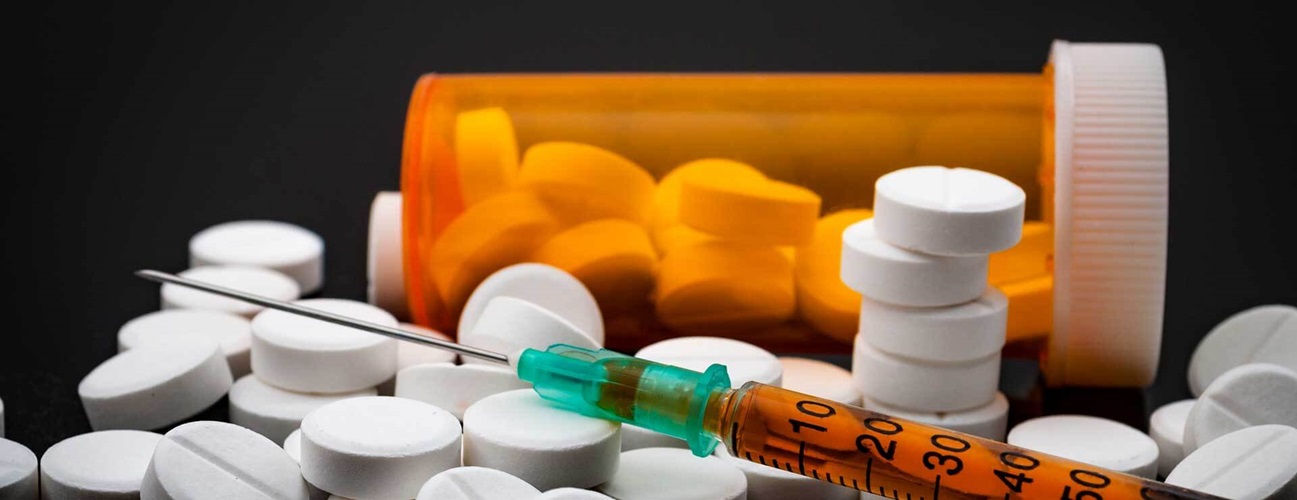Everything You Need to Know About Prescription Opioids

Drugs damage the lives of millions of Americans every year. The types of most abused substances include alcohol, marijuana, and opioids.
When you think of the latter, you probably associate that class of drugs with illicit substances, like heroin and fentanyl. While these narcotics are extremely dangerous, they only account for half of the opioid-related incidents.
Prescription painkillers, though regulated, have been reported as the main culprit of over 40 percent of all opioid-related fatalities.
Table of Contents
Prescription Opioids: Defined
Like their illicit counterparts, prescription opioids are partially derived from the poppy seed that grows in Central & South America and Asia. Unlike synthetic opioids, like fentanyl, which are entirely man-made, the most popular prescription painkillers, like Vicodin, are semi-synthetic. What that entails is the production process includes both lab-created ingredients and natural opium extraction.
Some of the most prescribed painkillers include oxycodone, methadone, codeine, morphine, buprenorphine, hydrocodone, and meperidine. The most common use of prescription opioids is pain relief. They could also be prescribed against continuous diarrhea and coughing. The problems arise when the patient becomes dependent on the drug, as she is hooked to the euphoric sensation the substance could trigger. With repeat use, this could develop into a full-blown addiction, magnifying the risks of abuse and fatal overdose.
How Do Prescription Painkillers Work?
To understand the complex nature of opiate addiction, you need to learn about the chemical processes in the body once the drug enters the organism. Once the substance is consumed, it is distributed through the person’s bloodstream until it reaches the spinal cord and the brain. When it has arrived at those two points, the opioids attach to the active opioid receptors and block any pain signals while enabling the release of dopamine hormones. The user then experiences an unparallel euphoria that could lead to a dependency.
Side Effects of Prescription Opioids
Even when use is monitored, the patient may experience moderate to severe side effects. These are more dangerous when opioid abuse is present.
Some of the most common harmful side effects include:
- Nausea/vomiting
- Skin sensitivity, redness, or itching
- Excessive perspiration
- Depression
- Slowed breathing
- Disorientation
- Drowsiness & low energy
- Decrease in testosterone
- Constipation
- Dry mouth
Addiction to Prescription Opioids
Prescription painkillers are highly addictive, and if use is not closely monitored, a dependency may easily form. When the person begins to experience moderate to severe withdrawal symptoms, he may find them impossible to manage. As a result, he continues to consume the substance, though awareness of its negative repercussions may be present.
As tolerance builds up over time, the victim starts to increase the daily doses or decides to mix up with other drugs. This poses extreme hazards of an overdose and is accountable for more than half of all prescription opioid-related deaths.
Risk Factors for Developing a Prescription Opioid Addiction
Everyone who is exposed to prescription painkillers should exercise extreme caution. Some of the common indicators of the formation of addiction include:
· Overlapping Prescriptions
When the user starts seeking overlapping prescriptions from various pharmacies and providers, this is a sure sign of the onset of addiction.
· Psychological Disorders
People with jeopardized mental health are more susceptible to develop a dependency on prescription opioids.
· History of Drug Abuse
A pre-existing exposure to substances at a young age often increases the likelihood of abusing substances during adulthood.
· High Dosages
The higher the prescribed dosage, the higher the chances of quickly increasing tolerance and having more severe withdrawal symptoms.
· Income & Location
People who live in rural areas or have a low income are more prone to abuse prescription painkillers.
Treatment for Prescription Opioid Addiction
Once addiction has been shaped, the safest and most efficient way to recovery is through therapy. Various treatment options are offered to suit the diverse needs, preferences, and lifestyles of opioid addicts.
People with more severe substance use disorders often require intervention. Detox is the standard first step in the process, as the patient could suffer from severe and sometimes life-threatening withdrawal symptoms. After a system reset, the user gets referred to continuous therapy. Numerous support groups and 12-Step programs are also available to ensure smoother recovery.
If you or a loved one is suffering from a prescription opioid addiction, you should seek immediate help. You can instantly search Google for your local area, e.g. “Best rehab for prescription painkillers in Hendersonville, TN.” Once you have narrowed down the results, consult with your physician, and get admitted as soon as possible. Receiving timely treatment increases the chances of successful recovery.






